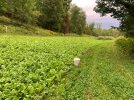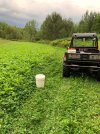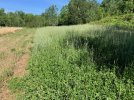River-X
5 year old buck +
After a bunch of research I’m going to try using no till plot methods and see how things go. Along with that I am going to try to keep the fields growing with something all season. It works for others so maybe it will work for me too. Just like anything, I think there are pros and cons and we will see how it goes. I don’t expect any major revelations in the first couple years, but hopefully it will be a better balance to my habitat, land, soil, and time obligations.
I have a plan, and thats where it starts I guess. But I think there is some famous line about how quickly plans come apart or something of that nature.
I guess I’ll find out.
River
I have a plan, and thats where it starts I guess. But I think there is some famous line about how quickly plans come apart or something of that nature.
I guess I’ll find out.
River









